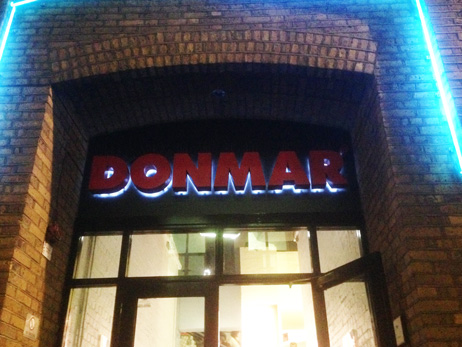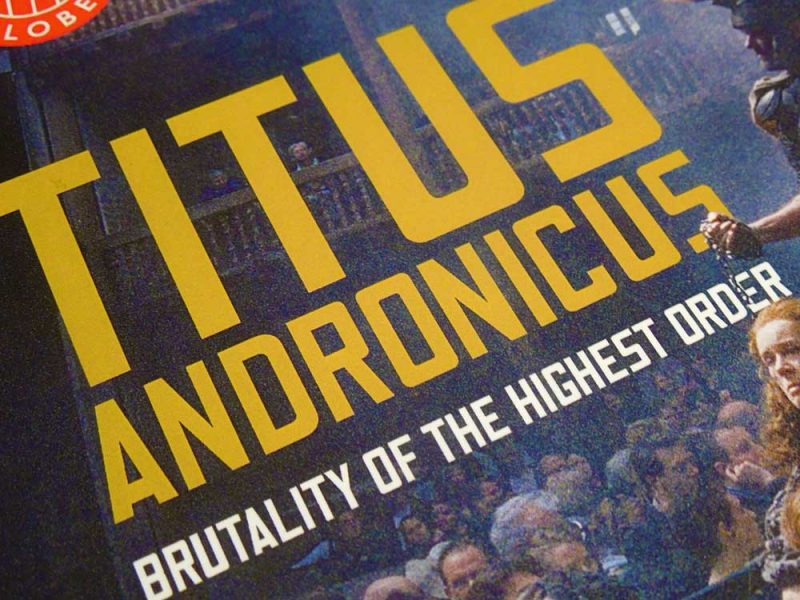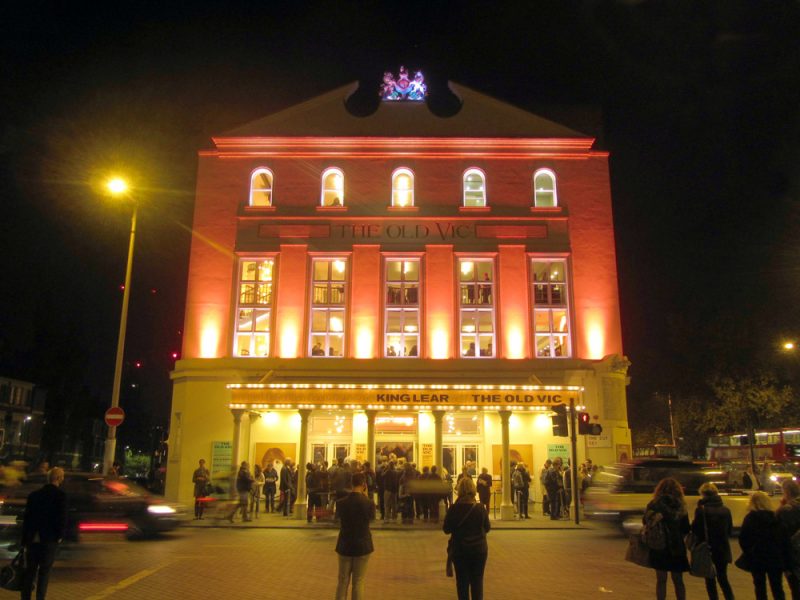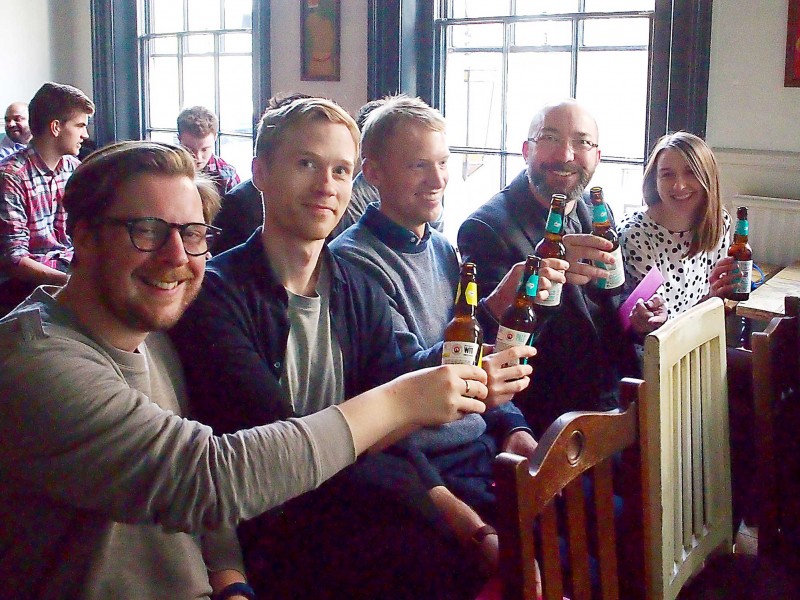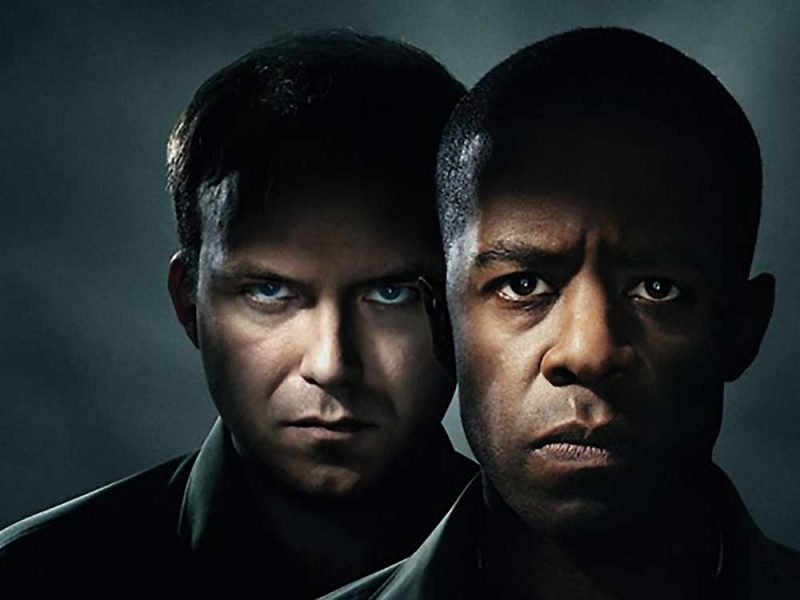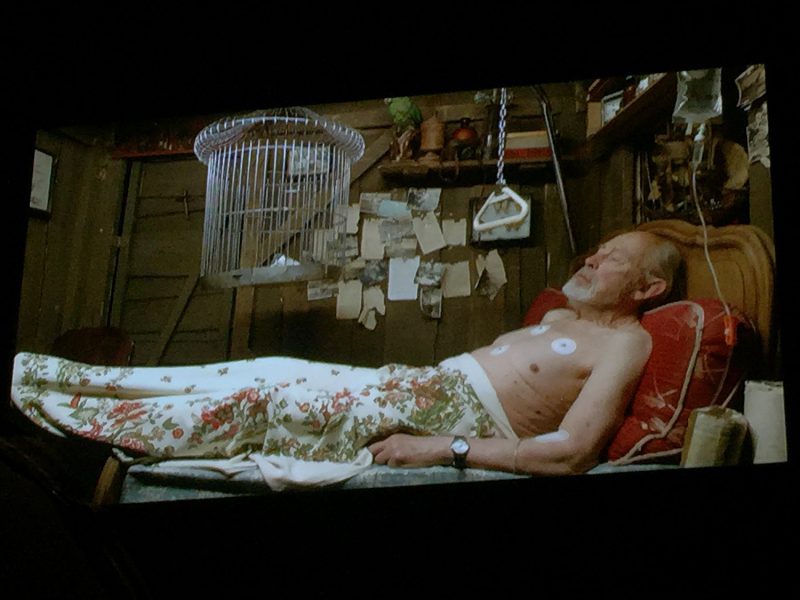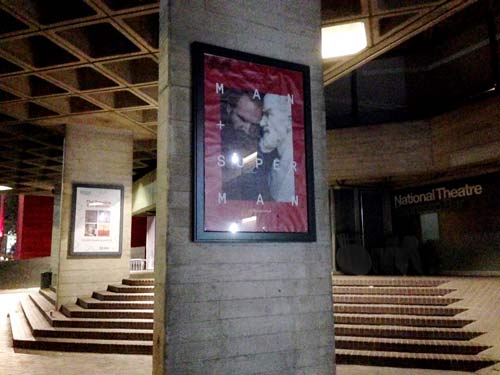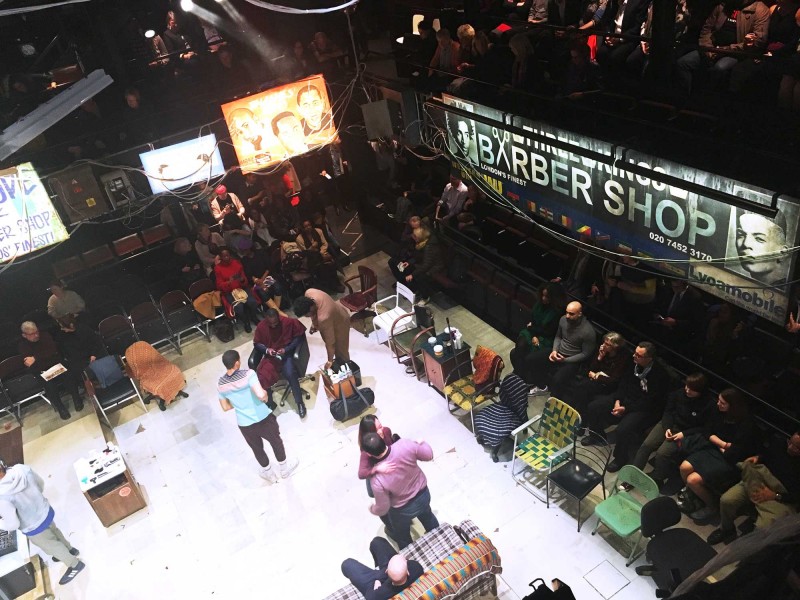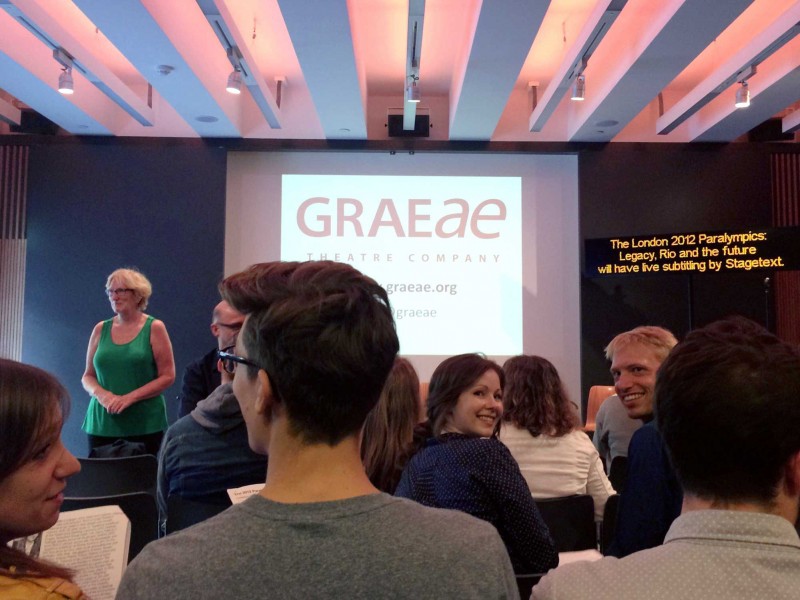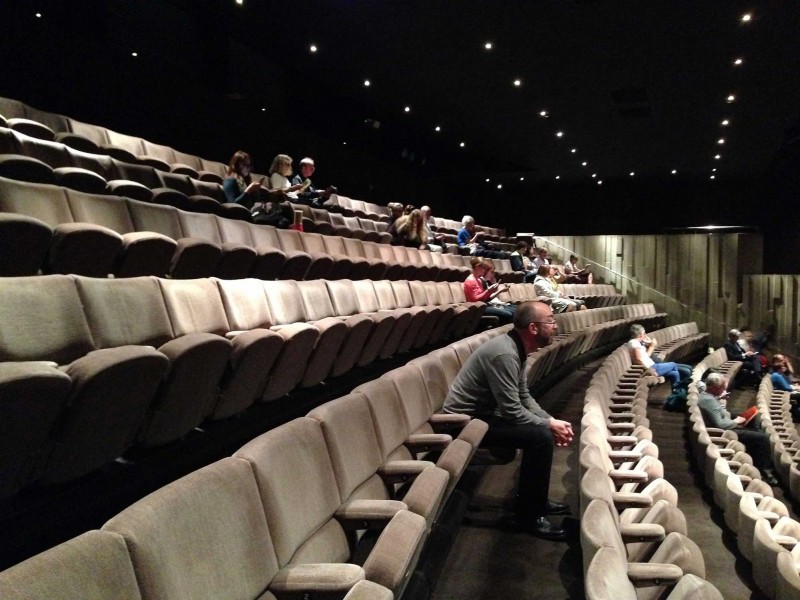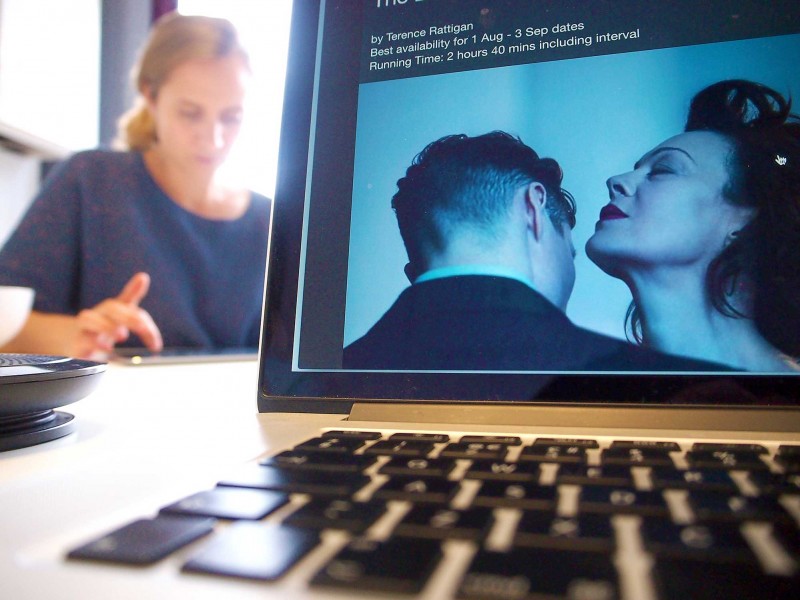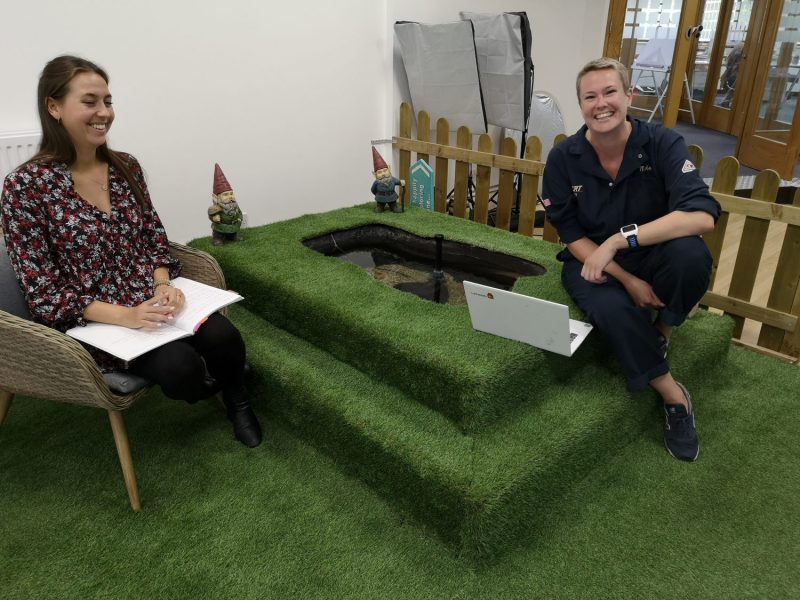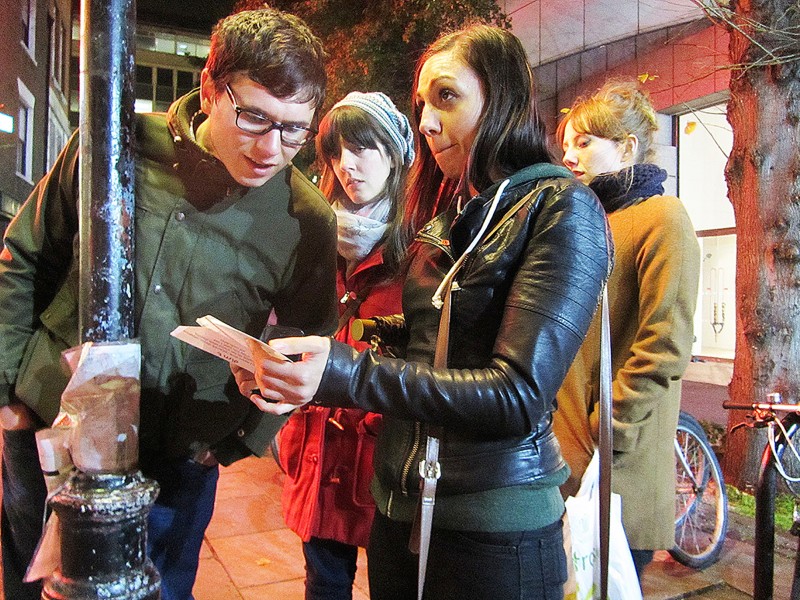I’ve never been a fan of King Lear, I don’t think I’ve got the intellectual stamina to cope with three plus hours of twists, turns, plots and places. But when I saw that Sam Mendes was directing and I saw his cast (led by everybody’s favourite Shakespearian lead, Simon Russell Beale), I was intrigued to know if they could win me round.
King Lear at The National Theatre
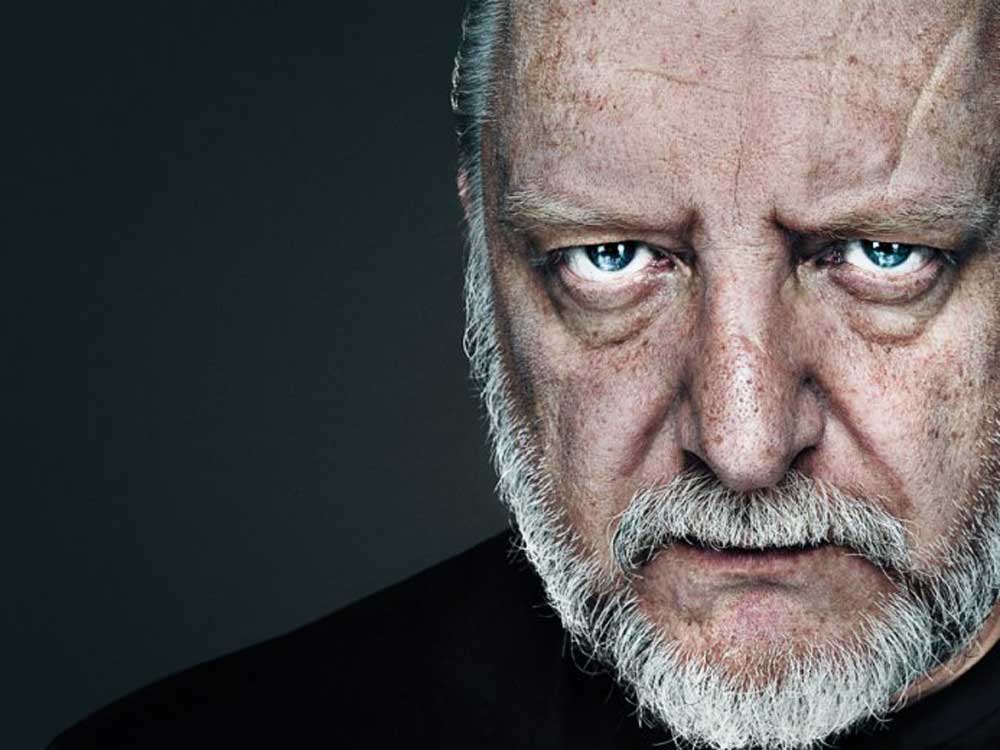
The opening scene is magnificently set on the circular stage of the Olivier Theatre. A ring of black-uniformed soldiers enclose the action. In the centre, a long table forms the familiar scene of modern political inquisition. Behind it the familial scene of Lear’s three daughter’s – Goneril and Regan with their husbands, and Cordelia beside an empty chair. Facing them, with his back to the audience is Lear, slouching and menacing.
Lear leans into a microphone and begins his examination. His daughters are obliged to give evidence of their love for their aging father, in return for a share of his kingdom.
Perhaps I was put off by last seeing Russell Beale as the King in Spamalot but I never got a sense of charismatic power.
Goneril begins with platitudes to her father’s delight. Regan, played by Anna Maxwell Martin as a sultry temptress, takes the rhetoric to a whole new level of insincerity. But when Cordelia, Lear’s youngest daughter, refuses to join in the ego stroking game, the tragedy is set. Lear humiliates her, refuses her inheritance and banishes her from the Kingdom.
Throughout this action, the King’s fool, played wonderfully by Adrian Scarborough, sits on a stage runway, extended into the audience. Perched, silent and motionless on a suitcase, the fool is like the ironic voice of Lear’s conscience and sanity.
The setting paints Lear as a modern tyrant (Stalinist echoes run through the production) but it was all a bit too subtle and actory for me. Perhaps I was put off by last seeing Russell Beale as the King in Spamalot but I never got a sense of charismatic power. Despite the pompous circumstance he didn’t command the heights of a feared leader, so his supposed rapid descent to ridiculed old man did not feel, to me, like a dramatic fall.
There are moments of brilliance in this production. After the opening scene, Lear sits to the side as his soldiers feast on stag and wine. He is alone in a crowded room, incapable of normal social interaction. It is the arrival of his fool that bridges the void, only through the fool’s jokes is Lear able to talk to his men.
With the set-piece scenes out of the way, we were off into hurtling plot of typical Shakespeare. As always, the play is an intertwined jumble of exceptional subtlety and ham-fisted metaphor and, to keep it down to three hours, the actors had to speak at such a pace it was difficult to keep up (or occasionally to hear them at all).
The loyal Earl of Kent is banished, dresses as a peasant and arrives back at court and nobody recognises him. The sub-plot of feuding brothers is woven in, a bastard son lies to his brother and turns father against son, who then hides in a hovel, disguised as a madman (in Shakespeare, it seems, madness is best portrayed by being naked). The father uncovers a plot to kill the King, is blinded and only then ‘sees’ the mistakes he has made, he is reunited with his son (whom he doesn’t recognise) and is tricked into not committing suicide.
The action moves between half a dozen settings and royal seats; Lear’s remaining two daughters plot against him, inexplicably fall in love with the evil bastard son and betray husbands and each other. The King apparently descends into madness, which we know because he takes off his clothes, and in this production kills his fool (which plugs a plot gap in the play).
Everyone makes their way to Dover where the youngest daughter, Cordelia invades with a French army. She is defeated and captured. One sister kills the other, the bastard son is killed by his brother, the other sister kills herself, Cordelia is executed by mistake and Lear dies from the shock.
https://www.youtube.com/watch?v=YXkt8c5I2uo
This was a great cast, the acting, directing and staging produced moments that had me completely entranced. If this production couldn’t win me over then I think it’s time to admit that I just don’t like the play.



